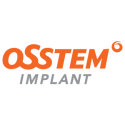OBEZİTE CERRAHİSİ
Roux en Y Gastric Bypass
Roux en Y Gastric Bypass Surgery Operation Details Istanbul Turkey |
||
|---|---|---|
Click Here For More Information |
||
Roux en Y gastric bypass is one of the most commonly performed bariatric surgery procedures worldwide. With Roux en Y gastric bypass surgery, which allows both to reduce the stomach volume and to restrict absorption, the amount of food consumed by the patient is reduced, while some of the nutrients are eliminated without being absorbed.
Within the scope of Roux en Y gastric bypass surgery, the stomach is divided into two parts, namely one small and one large. The small part of the stomach is positioned at the top and connects directly to the small intestine. Besides reducing the total volume of the stomach with surgical intervention, a part of the intestines is also positioned passively.
Since a part of the intestine is disabled, some of the consumed nutrients are removed from the body without being included in the absorption system. Thus, conditions suitable for weight loss are provided, and the patient can be prevented from entering the weight gain process again.
After Roux en Y gastric bypass surgery, obese patients begin to feel full in a shorter time, although they consume less food due to the reduction of their total stomach volume. This is also a process that makes it easier for the patient to suppress the appetite and adapt to a balanced diet program much more easily. Thus, thanks to Roux en Y gastric bypass surgery, patients are able to lose their excess weight, which they cannot lose with regular diet and sports, in a much shorter time and easily.
What is Roux en Y Gastric Bypass?
Frequently used in bariatric surgery, Roux en Y gastric bypass provides reliable weight loss with acceptable risks and minimal side effects. Applied for both reducing stomach volume and restricting absorption, Roux en Y gastric bypass plays a role in reducing the amount of food consumed by the patient and removing some of the consumed nutrients from the body without being absorbed.
Roux en Y gastric bypass is a procedure that falls under the fields of obesity and metabolic surgery. Roux en Y gastric bypass can be applied to people who cannot get rid of their excess weight with regular diet and exercise, but also have various health problems due to their excess weight. While the gastric capacity of the patient is reduced within the scope of gastric sleeve surgery, both gastric capacity and absorption are reduced in Roux en Y gastric bypass surgery.
Gastric bypass surgery basically involves bypassing a large part of the stomach. A small volume of stomach is prepared with this process, and this part is sewn into the small intestine. This surgery is a method often used in general obesity surgery. As with all obesity surgeries, the aim is to reduce the stomach, disable part of the intestines and remove some of the foods consumed from the body without being absorbed. In this way, patients get a feeling of satiety by consuming less food, and only part of the food they consume is absorbed. This, in turn, prevents weight gain.Gastric bypass is an operation in which surgical procedures are used to create a small pouch at the top of the stomach. The pouch is then attached to your small intestine and the rest of the stomach is used as the residual part. This means that it takes less food to make you feel full, and you will absorb fewer calories from the foods you eat.
Quick Appointment
Contents
How is Roux en Y Gastric Bypass Applied?
Roux en Y gastric bypass is a laparoscopic procedure. For this reason, it is performed using special instruments and cameras through only 6 incisions smaller than 1 cm. It is not an application that requires a large incision in the abdomen.
The first step of Roux en Y gastric bypass surgery is to create a small stomach called a “gastric pouch” at the entrance of the stomach. The stomach pouch created has a volume of less than 1 tea glass, which corresponds to an average of 35 to 50 cc.
For the newly created gastric pouch, a new pathway is needed to allow food to pass into the intestines. In order to make this pathway, the small intestines are cut at an average distance of 50 to 75 cm and the end, which continues downward, is connected to the newly formed stomach pouch by pulling up. Thus, the food consumed by the patient comes to the stomach pouch. Since the old stomach becomes passive, there is no contact with food. The passage of the food coming into the newly formed gastric pouch to the small intestine, which is directly connected, and the separation of the remaining stomach and a part of the small intestine from the food passage in such a way that it does not come into contact with the food, not only prevents the absorption of all nutrients, but also positively affects the weight loss process.
The flow of the secretions of the stomach, which is separated from the passage of food, and the secretions of the small intestine, which continues depending on it, to the rest of the small intestine is a necessary condition for the absorption of nutrients and some minerals, which are indispensable for a healthy life. If this connection is not made to the intestine, there will be various problems, and the part at the beginning of the small intestine, which does not pass food through, is ensured to function only as a conduction channel for bile and pancreatic secretions. For this purpose, the end of the small intestine is made to a point that reaches the middle of the small intestine that connects to the new stomach.
Created by the procedures applied within the scope of Roux en Y gastric bypass surgery, the new small stomach makes the patient feel full even if a very small amount of food is consumed. Since the initial part of the small intestines is skipped, all the nutrients in the consumed foods are prevented from being absorbed. The advantage of this is that it is possible to remove the high calories, taken especially by consuming fats and pastries, from the intestines without being absorbed.
It is possible for patients who have undergone Roux en Y gastric bypass surgery to lose their excess weight very quickly and effectively without difficulty. The rapid weight loss process decreases when the patient starts to approach their ideal weight and stops completely at the end of about 2 years. Five years after the operation, some patients may experience some weight gain. This situation is considered one of the most important indicators that Roux en Y gastric bypass surgery does not cause uncontrolled weight loss.
NEED HELP?
For all your questions, Dr. You can reach us 24/7 on the HE Support Line.
Is Roux en Y Gastric Bypass Harmful?
As is the case with any surgical procedure, Roux en Y gastric bypass surgery has some risks. These risks can be listed as follows:
- Standard risks related to bypass surgeries;
- Vitamin and mineral deficiencies caused by decreased absorption;
- Diarrhea problem due to the shortening of the small intestine distance;
- Osteoporosis;
- Insufficient or excessive weight loss;
- Anastomosis leak;
- Vomiting and nausea;
- Wound infection or abscess;
- Deep vein thrombosis;
- Bleeding;
- Fistula;
- Pulmonary embolism;
- Anastomotic stenosis;
- Stone formation in the gallbladder or its pathways;
- Incisional hernia;
- Partial or complete intestinal obstruction due to adhesions formed in the abdomen.
Roux en Y Gastric Bypass Before & After Gallery
[sp_wpcarousel id=”30044″]
Who is Eligible for Roux en Y Gastric Bypass?
Although Roux en Y gastric bypass surgery is applied correctly to the right patient, it provides effective results, but it is not applicable to every patient with the obesity problem. The criteria sought in patients who will undergo Roux en Y gastric bypass surgery can be listed as follows:
- Having a body mass index of 35 and above;
- Having a body mass index between 35 and 39.9 and secondary health problems caused by obesity in the patient;
- All non-surgical obesity treatments have been applied to the patient, but no or sufficient results have been obtained.
How to Eat Before and After Roux en Y Gastric Bypass?
There are some points to be considered about nutrition after Roux en Y gastric bypass surgery. Roux en Y gastric bypass surgery is basically considered the first step in the process of getting rid of excess weight. The important point is that it is possible for the patient to fully comply with the post-operative nutrition program. Priority in this process is as follows:
- Allowing the stomach to heal without stretching due to consumed food;
- Gaining the habit of eating with small portions that the stomach can digest comfortably and safely;
- Helping to lose weight and prevent regaining the lost weight;
- Preventing possible side effects and complications caused by surgery.
A gradual program is followed during the nutrition process after Roux en Y gastric bypass. As the patient recovers, the next step in the nutrition program is started. The rate of transition between stages may vary depending on the patient’s recovery rate and the rate at which the intestines adapt to changing eating habits.
The first stage is the liquid nutrition process, which includes a few days after the surgery. At this stage, clear liquids can be drunk by sipping slowly, not exceeding half or 1 tea glass at a time. Broth, filtered soup, decaffeinated tea or filter coffee, skim milk or less than 1%-fat milk, unsweetened water, unsweetened gelatin, and pudding can be consumed.
The second phase begins after the successful completion of the liquid nutrition process. At this stage, foods that are crushed or pureed, grain-free and have a soft puree consistency and do not contain solid food parts can be consumed. At this stage, the foods to be pureed should be preferred among well-blended foods such as minced meat, fish, soft fruit, and cooked vegetables, legumes, eggs, and cottage cheese. Liquids such as water, unsweetened fruit juice, skimmed milk, and broth can be used to mix and puree solid foods.
In the second stage, solid foods and liquid foods should not be consumed at the same time. It is required to wait 30 minutes after a meal to consume liquids. Since the digestive system may be sensitive to dairy products and spicy foods, they should be added to the diet in a controlled manner.
In the third stage, small, soft-grained and easily chewable foods can be added to the diet. At this stage, minced meat or finely chopped meat, seeds or skins removed, canned or soft fresh fruits and cooked vegetables can be consumed.
Approximately 3 to 4 months after the operation, the fourth stage is started and a healthy normal diet is started. At every stage of the nutrition program, care should be taken to eat and drink slowly at the point of getting enough vitamins and minerals and reaching the weight target. Meals should be eaten in small bites, the bites should be chewed very well and liquids should be drunk between meals.
High-protein foods should be concentrated on, and foods containing high sugar and fat should be avoided. In addition, recommended vitamin and mineral supplements should be taken regularly. Although Roux en Y gastric bypass surgery provides long-term weight loss, it should be noted that the amount of weight to be lost depends on the patient’s weight and lifestyle changes.
QUALITY CERTIFICATES














